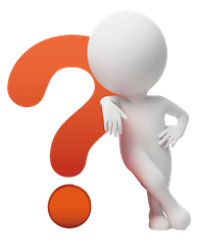 Here are some common questions that parents have asked me in the past:
Here are some common questions that parents have asked me in the past:
So, what is speech therapy and what does a therapist do?
- Speech therapy is a type of therapy that helps people who have problems with communication. Speech-language pathologists, also called SLPs and speech therapists, are experts in communication and are the people who provide speech therapy. SLPs are the professionals who identify, assess, and treat speech and language problems including swallowing disorders.
- Many children need help communicating. This could be due to a language or articulation delay or disorder, an illness or accident, or other diagnoses, such as Autism. Speech and language therapy is the therapeutic treatment of speech and language difficulties and disorders. This therapy helps to prevent, diagnose and/or rehabilitate an individual’s speech and language difficulties. Speech-language pathologists also work with individuals with feeding/swallowing disorders or difficulties, social skills difficulties, and oral motor deficits.
- For some children, it isn’t always a matter of working on verbal output of language, but instead working on an overall method of communication. This is called Augmentative and Alternative Communication (AAC). AAC methods can include pictures, speech producing buttons and/or speech generating devices.
- For children, speech therapy is completed through movement, toys, games, books, and pictures. If therapy is fun, it will encourage participation which will ultimately improve language and communication skills.
What does typical speech and language development look like?
- The first 3 years of life, when the brain is developing and maturing, is the most intensive period for speech and language development. These skills develop best in a rich and supportive learning environment. Learning as an infant and toddler doesn’t come through work but through play.
- Play allows children to use their creativity while developing their imagination, dexterity, and physical, cognitive, and emotional strength. Play is important to healthy brain development. It is through play that children at a very early age engage and interact in the world around them.
- At 6 months, babies are beginning to coo and make babbling sounds. They also pay attention to music, voices, and sounds.
- At one year, babies are consistently babbling (mamama, papapa) and are using 1-2 words to communicate such as “milk” or “up”. They are also starting to play social games like “peek a boo”.
- At 18 months, toddlers can point to a few body parts, use around 50 words, and can put two words together (“more milk” and “want up”).
- By two years, toddlers generally use around 200 words, follow two-step directions (“get your shoes and bring them to me”), and use 2-3 word sentences (“I want milk” and “where ball go?”).
- At 3 years, children should be able to produce 3-4 word sentences, ask questions, follow three-step directions, and be 75% understood in speech.
- At four years old, children should be able to produce most of their speech sounds (/p/, /b/, /m/, /n/, /t/, /d/, /k/, /g/, /f/, /s/, /y/, /h/), understand words related to time and order such as yesterday, today, first, and last, and be able to tell a short story.
Why is it so important to get speech therapy early on?
- Addressing speech and language delays between ages 0-3 is called early intervention. This is a crucial time in a child’s development. Treating speech and language delays during this time can prevent further problems related to behavior, learning, reading, and social interaction down the line. Research on brain development shows that treating delays earlier really is better as the majority of the major brain structures have matured. Once brain structures have matured, making significant changes in a child’s growth and development becomes more challenging.
My child isn’t talking as much as I would like. Do they need speech therapy?
- That can be a tough question for any parent or caretaker who is concerned about the speech, language, feeding, or social skills development of their children. To help make this decision, Speak Up Speech Therapy will perform a communication assessment to determine how your child’s speech, language, social or swallowing skills are developing and which areas your child might need some improvement.
If my child does need speech therapy, what will that look like?
- At Speak Up Speech Therapy, treatment is provided one-on-one in a private therapy room setting. Parents are welcome to observe within the therapy room or wait out front in the waiting room.
- Parent guidance and training is offered with every therapy session so that goals can be addressed and support can be provided outside of the therapy setting.
- For children, therapy is often done through movement, toys, games, books, pictures and practice to encourage participation and make therapy fun while your child improves their language and communication skills.
- Sessions last 30, 45, or 60 minutes on a weekly or bi-weekly basis. Each child is an individual, and how long therapy lasts and how often therapy occurs can be modified to meet the child’s needs.
- Therapy is all about learning and having fun! Children learn best through play, and when a child is engaged in what they are doing, newly learned skills will move to mastery more quickly.
- I emphasize practice, practice, practice. Working on newly learned skills repeatedly will help your child to retain the skills outside of the therapy room.
- Although I am the one providing the therapy, you and your child are part of my team, and helping you to understand the therapy process will make you both more invested in the treatment outcome.
- Online and paper resources are available for clients and their parents to access as needed.
